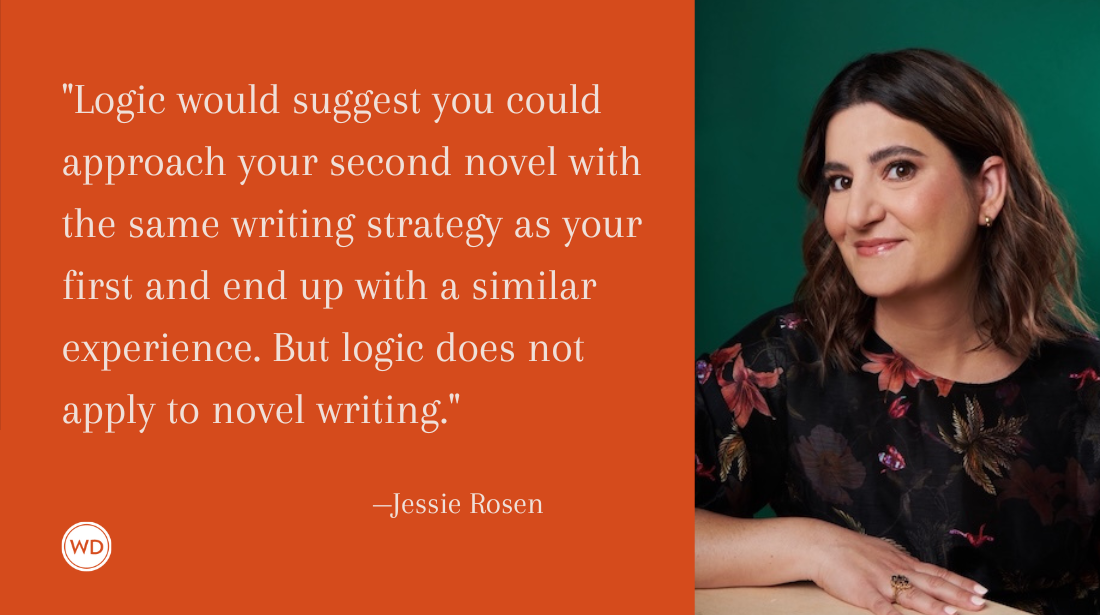Relating Historical Fiction Characters to a Contemporary Audience
Once you have built real people, that’s the time to put them into a historical context. Here’s how to do both.
I have in front of me a rare color photo of a young woman working in an aircraft factory in World War II. She has a bright yellow cap, a dirty blue shirt, and her arms are brown with sweat and grease. Her expression holds exhaustion and determination in equal measures. She is young—a teenager, really—but her work is vital to the war effort. And she knows it.
This guest post is by Michael Wallace. Wallace is author of the epic historical fiction novel, Crow Hollow. He was born in California and raised in a small religious community in Utah, eventually heading east to live in Rhode Island and Vermont. In addition to working as a literary agent and innkeeper, he previously worked as a software engineer for a Department of Defense contractor, programming simulators for nuclear submarines. He is the author of more than twenty novels, including the Wall Street Journal bestselling series The Righteous, set in a polygamist enclave in the desert. Connect with him at michaelwallaceauthor.com.
Is the same photo as effective in black and white? It would be artistic, certainly. It would feel historical. And maybe that’s the problem. That same girl in black and white would seem less a real person of sweat and aching muscles, and more a figure plucked from a history book. A member of the Greatest Generation, those people of story and myth, and not the same sort of wonderful, flawed humans who live in every time, place, and culture.
The playwright Lajos Egri once said, “living, vibrating human beings are still the secret and magic formula of great and enduring writing.” Nowhere is this more true than writing characters in historical fiction. The temptation is to make them static, to render them in tones of black and white. A heroic revolutionary or a brave pioneer. A rebellious slave. An evil Gestapo agent. Black and white types, not real people.
Instead, show us the greasy arms, the exhaustion and determination. Give us ambition and fear and desire, and every other human emotion that you would have in any place and time. Make your characters vibrate.
Once you have built real people, that’s the time to put them into a historical context. [Like this quote? Click here to Tweet and share it!]
In my novel Crow Hollow, I started with three characters. One was duty bound, with a strong sense of justice. Another was strong and independent, yet very close to family. The third was devout and religiously argumentative with people who didn’t share the same beliefs. Everyone knows these people. I could find all three by the time I walked to the end of my street.
Get the all-inclusive guide to writing your novel in 30 days,
landing an agent and getting published.
Order Novel Writing Today!
Next, I put these characters into a historical context where those tendencies would cause the most tension: Boston in 1676 in the aftermath of a devastating war with the native tribes. And I gave them additional background informed by that setting. My duty-bound character is an agent for the English king, sent to investigate crimes that occurred during the war. My strong, independent character is a Puritan woman who has lost her daughter in the wilderness and is desperate to get her back. My devout, religiously argumentative character is a “Praying Indian” from the Nipmuk tribe who was sent to England by missionaries and has returned to New England a Quaker. In the aftermath of the war, it is hard to say whether the people of Boston are more hostile to Quakers or to Nipmuk Indians.
These three characters provided a volatile mix within this particular historical setting. By starting with the assumption that people of every time, place, religion, culture, and gender have more similarities than differences, the details of their background added flavor. They weren’t the sum total of their individual characters. If I had started with the types, it could have easily become a story about a Puritan, an Agent of the King, and an Indian.
We know what that looks like. It’s a black and white photo of character types, not real characters at all.
Back to the photo of the World War II factory worker. There’s a detail you’d miss if that photo had been black and white. Rendered in color, you see that the girl has red painted fingernails. And she may have pulled on overalls that morning before leaving for the aircraft plant, but she still took time to dab on red lipstick. She must have known that she’d end up sweaty and covered with grease. So why do it?
The answer to that question is where the story is found.
Other writing/publishing articles & links for you:
- Here are 4 things to consider when researching literary agents.
What are overused openings in fantasy, sci-fi, romance and crime novels?
- What to write in the BIO section of your query letter.
- Here are 7 reasons writing a novel makes you awesome.
- New Agent Alerts: Click here to find agents who are currently seeking writers.
- Download a year's worth of writing prompts right here.
Thanks for visiting The Writer's Dig blog. For more great writing advice, click here.
Brian A. Klems is the editor of this blog, online editor of Writer's Digest and author of the popular gift bookOh Boy, You're Having a Girl: A Dad's Survival Guide to Raising Daughters.
Follow Brian on Twitter: @BrianKlems
Sign up for Brian's free Writer's Digest eNewsletter: WD Newsletter








